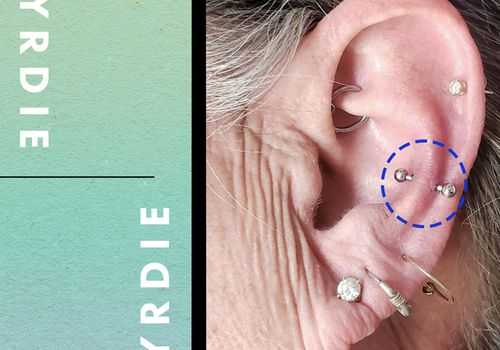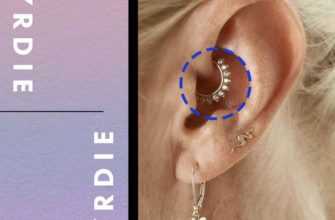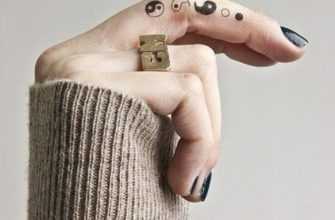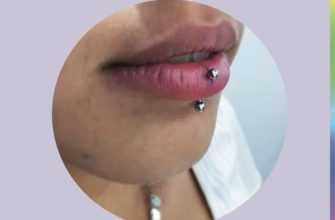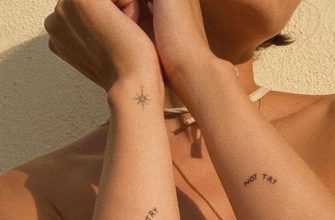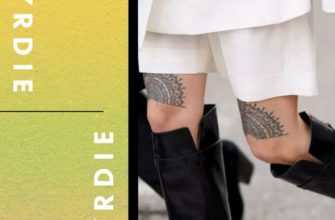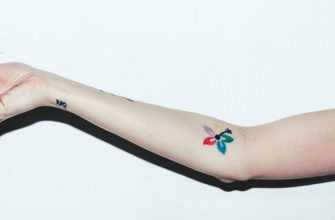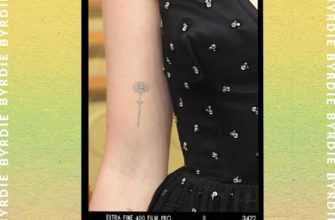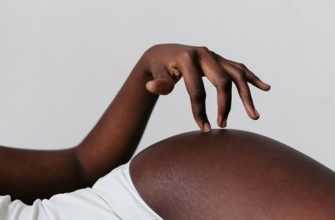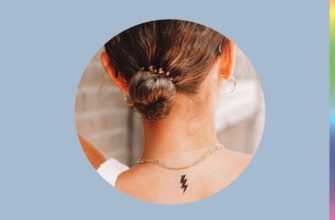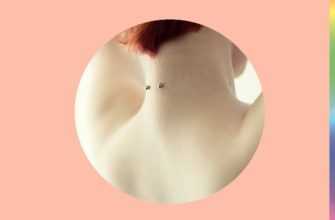What Is a Snug Piercing? Pain and Healing Time Cost of a Snug Piercing Aftercare Side Effects How to Change Out a Snug Piercing Type of Jewelry Used Jewelry Material Used. Snug piercings, also called anti-helix piercings, are not for the faint of heart. Considered the most painful cartilage piercing—and to some, most painful piercing overall—the snug piercing is located at the top of the anti-tragus, and is inserted through an area called the anti-helix, which sits between the rim of your ear and the inner cartilage. On top of being painful, it’s also not one-size-fits-all; in other words, it’s completely possible that your ear shape won’t support a snug piercing.
Despite the difficulties that come with it, a snug piercing is a unique and interesting ear piercing for anyone who wants something outside the norm. There’s a vast range of jewelry for snug piercings too, so you’re able to customize them however you’d like so you’re always rocking a piercing you love. If you’re considering a snug piercing, here’s everything you need to know about it.
Snug Piercing
Placement: Between the mid-helix (outer ear ridge) and the inner conch along the cartilage.
Pricing: Varies depending on shop and location. Nicky estimates anywhere from £40-80 in the UK ($56-113 USD), while Bader charges $55 at her shop.
Pain level: 9/10, as it’s considered one of the most painful cartilage piercings.
Healing time: Healing time is roughly four to six months, but both Bader and Nicky say to plan for a year.
Aftercare: Wash the piercing two times a day with whatever product your piercer recommends until your piercing is fully healed. Green recommends four to six months.
What Is a Snug Piercing?
A snug piercing is a horizontal piercing that sits right above the anti-tragus (or the inner ridge of the cartilage part of the ear). Something unique about a snug piercing is that its entrance and exit points are visible from the front of the ear, rather than going through to the back. There is a caveat to this type of piercing though: not everyone’s ear is able to accommodate it. Be sure to check with your piercer before beginning the process to ensure that it’s safe and comfortable to do so.
The piercing process is fairly straight-forward, though every piercer has their own technique. Most commonly, the area is first cleaned; the piercer makes marks on the ear to be sure the client is happy with the placement; and then a curved, single-use needle is pushed through and followed with jewelry.
“Each piercer will vary in technique, but they should always be pierced using a quality single use disposable needle, preferably lubricated for a slick, quick piercing,” says Nicky of Crimson Rose Tattoo in Manchester, UK. “They’re usually pierced from the outside-in using a freehand (without the use of tools) technique and a… curved barbell with room for swelling follows through.”
Pain and Healing Time
“Healing is different person to person, and also, depending on the trauma, the piercing may endure through the healing period,” says Stacy Bader of New Tribe Tattoo and Piercing in Toronto, ON, Canada. “I always say any piercing can take up to a year to heal, sometimes more and sometimes less.”
Snug piercings are in line with other cartilage piercings when it comes to healing time: about four to six months, according to our experts. However, because everyone’s body reacts differently to the process, Bader says you should prepare for that one-year timeframe. You can tell that a snug piercing is fully healed when no part of it is sensitive anymore and there is no crust building around the area for a full consecutive two weeks. Snug piercings are easily re-traumatized, though, so it’s important to take good care of the area even after it’s healed to ensure you don’t irritate it and return to the healing process.
Because the cartilage on the anti-helix is tougher, it takes more force to pierce it—meaning more pain. Bader says that, from her experience, it feels like a very heavy push of pressure. There’s no real way to know which part of the piercing process will be the most intense, though some feel more pain when the needle is pushed through (which takes one second or less) versus those who feel it during the insertion of the jewelry. It’s painful, sure, but Bader points out that it can’t be too bad or else there wouldn’t be so many people willingly getting a snug piercing.
“We go through more pain daily like stubbing your toe, getting a paper cut, or biting your tongue,” says Bader. “All of that hurts more than any piercing—we don’t have time to fear it because it is an accident, but we make it through just fine.”
Cost of a Snug Piercing
Just like any piercing or body modification, the cost of getting a snug piercing will vary depending on the shop you choose and where in the world you’re located. Unlike an industrial piercing, snug piercings tend to be charged as one package— the actual process and the jewelry included—rather than as two separate purchases. However, if you decide to get pierced with something other than the standard “starter” piece of jewelry, there will most likely be an additional charge. Some shops may also charge you for aftercare, so it’s important to know whether you’ll need that or not going into it.
“Every shop will vary with prices of piercings; it can depend on jewelry and location [and] overhead of shop,” says Bader. “My shop… charges $55, everything included except aftercare, which you can buy anywhere for a few dollars. Many shops charge a piercing fee and then depending on the jewelry you choose with depend on the final price.”
Aftercare
At the very least, snug piercings will take four to six months to heal, according to our experts, so it’s important to keep up with aftercare until it’s completely unnecessary. As well as the piercing symptoms, ears themselves might have build-ups of dead skin or other bacteria that could get into the piercing if it’s not properly cared for. “The area should be cleaned twice daily for at least three to four weeks,” says Michele Green, a New York-based dermatologist.
What to use during aftercare for your snug piercing isn’t set in stone, so it’s important to talk to your piercer about what they recommend. Green, for example, recommends washing with hydrogen peroxide, while Bader suggests using a natural, unscented soap. Further still, Nicky says she recommends salt sprays/saline solutions to his clients. Once you’ve spoken to your piercer about exactly what cleaning tool they recommend, the process is pretty much the same for everyone. Rinse your piercing twice daily, followed by whatever cleaning product your piercer tells you to use. Be sure to pat dry with a paper towel—not a fabric one—to further avoid a potential bacterial infection.
Even if you clean the snug piercing properly, it’s important to know that you will probably experience symptoms that may alarm you; however, they’re totally normal. “Expect swelling, redness, soreness, even a dull throb for the first few days to weeks,” says Nicky. “These tend to swell a little more than other cartilage piercings, which can cause slight discomfort for a while.”
One symptom that should draw your attention is cartilage bumps. Some of these bumps are called pustules, which means they’re filled with fluid; some are keloids, AKA thick scars that develop at piercing sites. Cartilage bumps are unfortunately extremely common with cartilage piercings; keeping up properly with aftercare will help you avoid these side effects, but they can also form if your ear wasn’t properly compatible with a snug piercing, which is why it’s so important to discuss this with a piercer first.
Your snug piercing will heal best when you leave it alone for as long as possible. Do not sleep on the ear with the piercing or tug at it so as not to irritate it. You should also keep the snug piercing away from any objects that may cause infection because of bacteria, like dirty pillowcases, headphones, hats, or a phone. Avoid getting a snug piercing on the ear you normally use to talk on the phone or in a season when you’ll have to keep your ears covered, like winter. Also be sure not to rotate or touch the jewelry during cleaning so as not to agitate it.
Side Effects of a Snug Piercing
“You may experience pain for a few days after your piercing, [as well as] swelling, bleeding, redness, or discharge from the area,” says Green. However, here are the side effects of a snug piercing to look for specifically to signal that something is going wrong:
- Infection: As with any piercing, the main unwanted side effect is an infection, says Nicky. If you see intense and persistent swelling, a bright redness that doesn’t go away, skin cracking, soreness, fluid build-up, or a discharge around the piercing site, it would be best to see a medical professional right away. According to Nicky, you’ll typically have to take an oral antibiotic to treat an infected piercing, only once it’s confirmed by a professional.
- Pustule: A blister or pimple filled with pus, potentially caused by a piercing being irritated while healing. Continue to clean your piercing as directed, adding salt soaks to your routine up to three times per day to flush the pustules out safely.
- Keloid: A thick scar that can form randomly, especially if you are genetically predisposed to them. Keloids are hard to care for once formed and have to either be removed or cared for in a way that reduces their appearance. Keloids can be surgically removed or have medication directly injected into the site to make it appear less visible. However, if you choose to leave them be, keloids will exist on your skin forever, so make sure to properly care for your piercing to avoid them in the first place.
- Rejection: This is the process where your body believes your new piercing is an unnatural threat and forces it out of your skin. As with most piercings, the only way to remedy rejection is to have the snug piercing professionally removed to hurry up the process.
- Migration: Like rejection, this is when your body pushes around your piercing. However, migration occurs when your snug piercing moves but isn’t completely pushed out. This is a rare occurrence in a snug piercing, but is typically caused by improper aftercare or having an ear not meant for it in the first place. If you see this happening, talk to an experienced piercer about getting the jewelry changed or other ways forward. Also be sure you’re properly following all recommended aftercare.
“Only commit to this piercing if you can commit to caring for it properly,” says Nicky.
How to Change Out a Snug Piercing
Snug piercings, while in an unusual place on the ear, are able to have their jewelry changed out if you’d like to switch up its appearance. As with all piercings, it’s important to wait until the snug piercing is fully healed before deciding to change it up aesthetically. While it’s possible to change the jewelry yourself, both Bader and Nicky recommend going to see a professional to have it done, as you could struggle and majorly irritate your piercing in the process.
“Professionals have all the tools and proper sterilized equipment to safely exchange your piercing with minimal to no trauma,” says Bader.
What Type of Jewelry Is Used for a Snug Piercing?
- Curved Barbells: A curved barbell is a small, curved metal piece of jewelry—typically with a fixed ball on one end and a removable one on the other. With a snug piercing, curved barbells are threaded through the hole immediately following the needle. While this piece of jewelry is typically very simple, curved barbells do come in a number of different styles, so you can find one that best suits your aesthetic.
- Ring: A ring is a small, round metal piece of jewelry that appears to wrap around the anti-helix, rather than through it like a curved barbell. It’s not recommended to get pierced with a ring; rather, go see a professional piercer once your snug piercing is fully healed to get the curved barbell changed to a ring. Having a piercer change it out will also give you the opportunity to see what type and size of piercing looks best on your ear.
In terms of what kind of jewelry not to get? “Try and avoid jewelry that hangs until the piercing is completely healed,” says Green.
What Jewelry Material Is Used for a Snug Piercing?
- Titanium: Titanium is not only a common and universal choice for piercings; it’s also what Nicky recommends. Considering it doesn’t contain any nickel or other allergens, titanium is the least likely to cause irritation for anyone—from the most rough skinned to the sensitive. Titanium seems to only have upsides, considering it’s also lightweight, aesthetically pleasing, and doesn’t corrode.
- Gold: Gold jewelry encapsulates yellow, rose, and white gold and is a gorgeous style for anyone who prefers the look of gold to that of silver. The only caveat is that gold jewelry must be 14-16 karats, as 18 karats or above will be too soft and could potentially harbor infection-causing bacteria.
- Implant-grade stainless steel: Implant-grade stainless steel is considered the most common type of metal to be used in piercings, and its vast ranging collection of jewelry styles supports that. Implant-grade stainless steel does contain nickel; however, the possibility of being allergic to the metal is so small that it’s considered relatively problem-free.

